A block A of mass 3kg and another block B of mass 2 kg are connected by a light inextensible string as shown in figure. If the coefficient of friction between the surface of the table and A is 0.5. What maximum mass C is to be placed on A so that the system is to be in equilibrium? (g=10m/s2)
 Solution in Telugu
Solution in Telugu
3kg
2kg
1kg
4kg
The correct Answer is:A
Step by step video & image solution for A block A of mass 3kg and another block B of mass 2 kg are connected by a light inextensible string as shown in figure. If the coefficient of friction between the surface of the table and A is 0.5. What maximum mass C is to be placed on A so that the system is to be in equilibrium? (g = 10 m//s^2) by Physics experts to help you in doubts & scoring excellent marks in Class 11 exams.
Updated on:21/07/2023Topper's Solved these Questions
- FRICTION BOOK - AAKASH SERIESCHAPTER - FRICTION EXERCISE - LECTURE SHEET EXERCISE- IV (LINKED COMPREHENSION TYPE QUESTIONS)
3 Videos
- FRICTION BOOK - AAKASH SERIESCHAPTER - FRICTION EXERCISE - LECTURE SHEET EXERCISE- IV (INTEGER TYPE QUESTIONS)
1 Videos
- FRICTION BOOK - AAKASH SERIESCHAPTER - FRICTION EXERCISE - LECTURE SHEET EXERCISE- III (INTEGER TYPE QUESTIONS)
2 Videos
- FLUID MECHANICSBOOK - AAKASH SERIESCHAPTER - FLUID MECHANICSEXERCISE - Questions for Descriptive Answers
14 Videos
- GAUSS.S LAW BOOK - AAKASH SERIESCHAPTER - GAUSS.S LAW EXERCISE - PROBLEMS (LEVEL - II)
12 Videos
Similar Questions
Block A of mass 35kg is resting on a frictionless floor. Another block B of mass 7kg is resting on it as shown in the figure. The coefficient of friction between the blocks is 0.5 while kinetic friction is 0.4.(g=10ms−2)
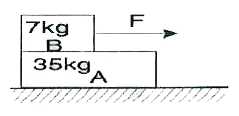
In the above question what will be the acceleration of the system?
View SolutionIn the figure, m1m2=1kg, The co-efficients of friction between A, B and B, surface are 0.2. The maximum value of m, so that no block slips is nx7 the value of n is (All the pullies are ideal and strings are massless).
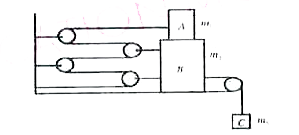
View SolutionA wedge of mass 2m and a cube of mass m are shown in figure. Between cube and wedge, there is no friction. The minimum coefficient of friction between wedge and ground so that wedge does not move is 2×10−x where x is
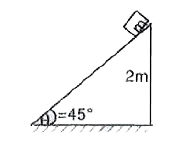
View SolutionA U-tube of base length I filled with same volume of two liquids of densities ρ and 2ρ is moving with an acceleration a on the horizontal plane. If the height difference between the two surfaces (open to atmosphere)becomes zero,then find height h
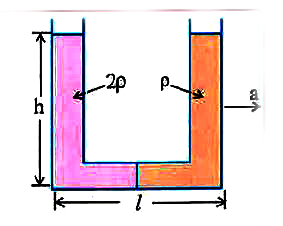
View SolutionA charge q is placed at the centre of the open end of a cyclindrical vessel. Find the flux of the electric through the surface of the vessel.
View SolutionA block A of mass 3kg and another block B of mass 2kg are connected by a light inextensible string as shown in figure. If the coefficient of friction between the surface of the table and A is 0.5 What maximum mass C is to be placed on A so that the system is to be in equlibrium
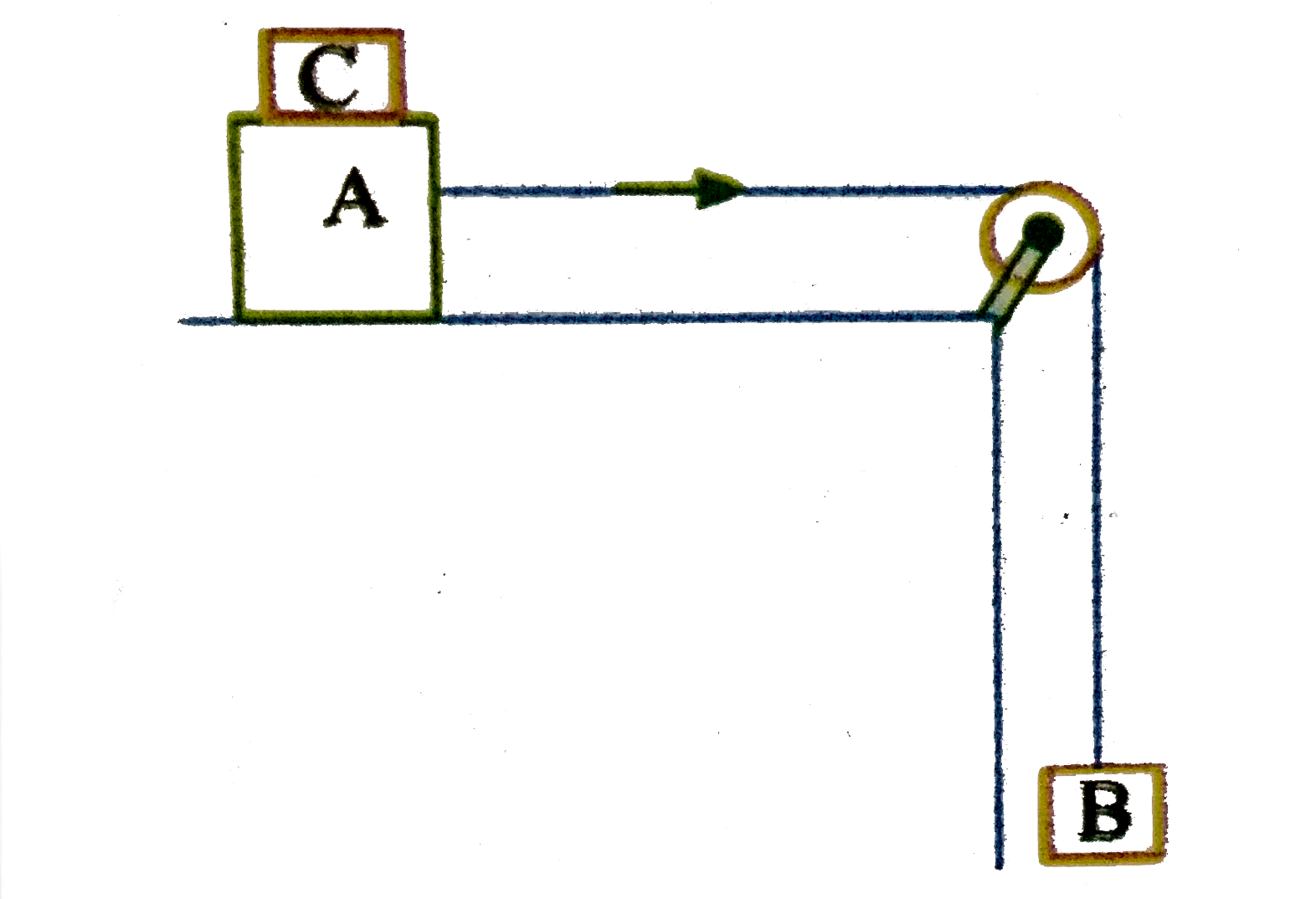 .
.
View SolutionAs shown in figure, A and B are two blocks of mass 5kg and 10kg connected by inextensible and massless strings. Pulleys 1,2,3 are massless, no frction exists between pully and strings. The coefficient of friction between blocks B and the surface is μ=0.1 Take g=10m/s2. Choose the correct statements.
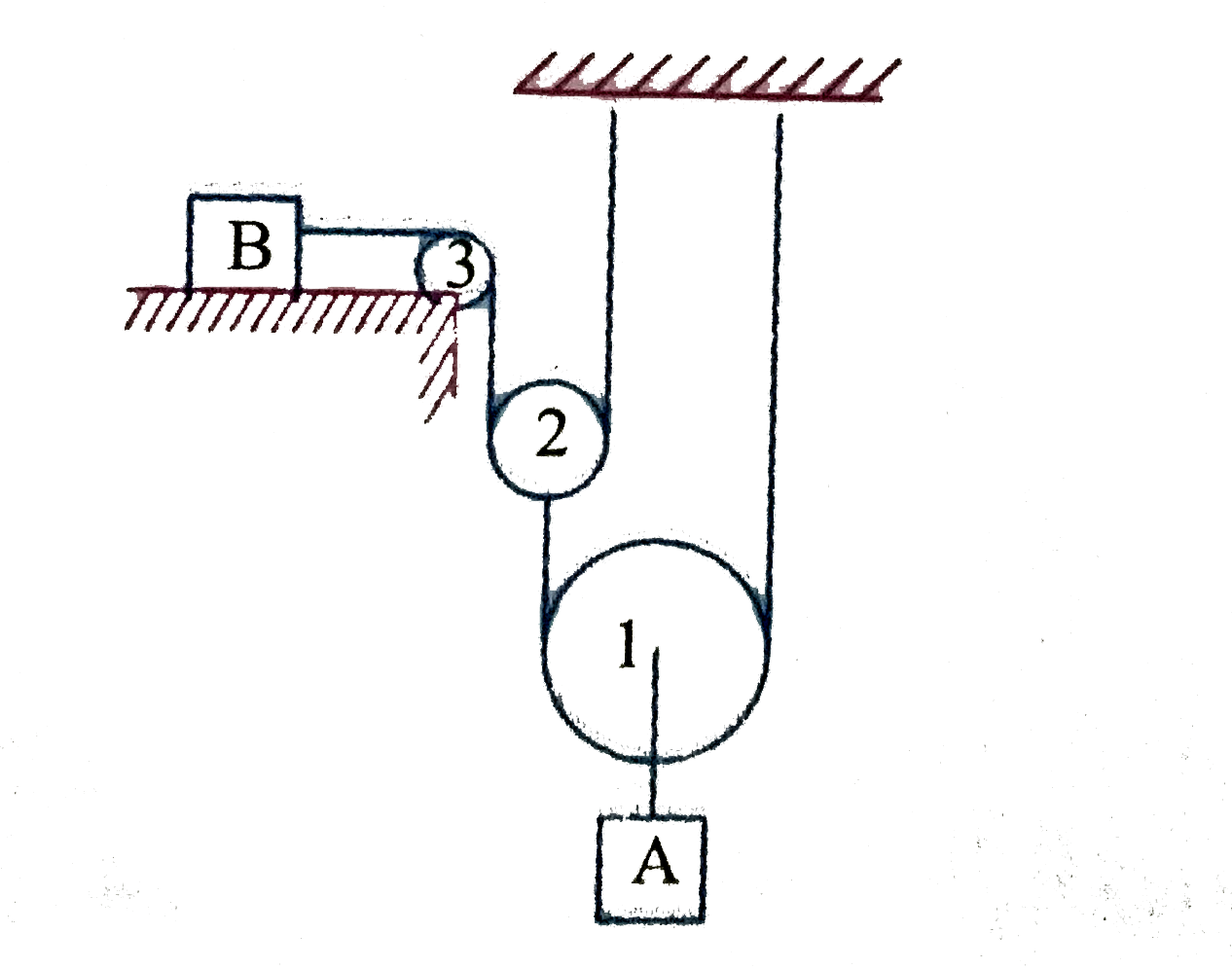
View SolutionThe coefficient of static friction, mu_(s) between block A of mass 2 kg and the table as shown in the figure is 0.2. What would be the maximum mass value of block B so that the two blocks do not move? The string and the pulley are assumed to be smooth and massless. (g=10m//s^(2))
View SolutionA body of mass 20 kg is moving on a rough horizontal plane. A block of mass 3kg is connected to the 20 kg mass by a string of negligible mass through a smooth pulley as shown in the below figure. The tension in the string is 27 N. The coefficient of kinetic friction between the heavier mass and the surface is (g=10m/s2) :
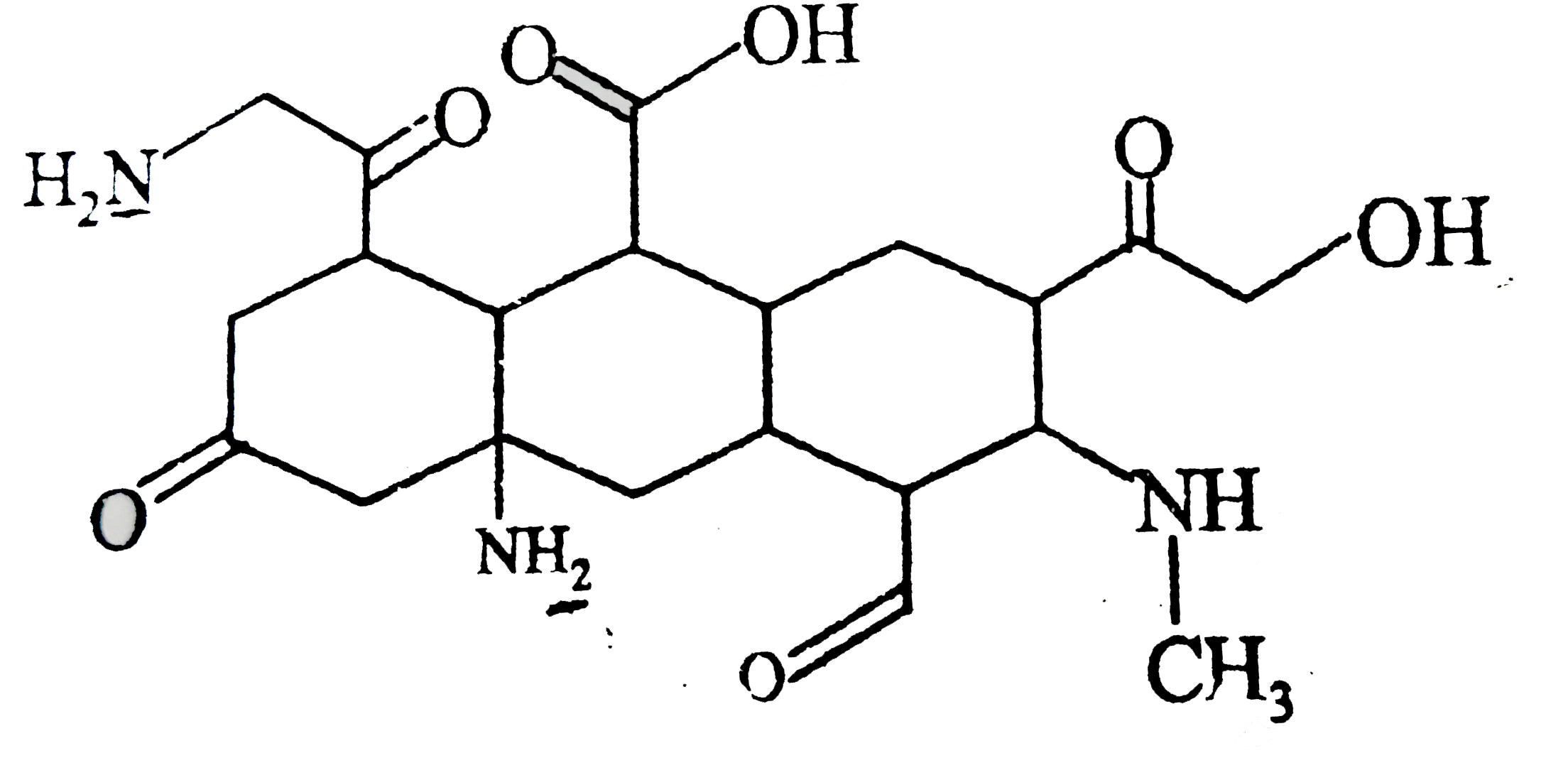
View SolutionA block of mass M is placed on a rough horizontal surface. It is connected by means of a light inextensible string passing over a smooth pulley . The other end of string is connected to a block of mass m. There is no friction between vertical surface and block m
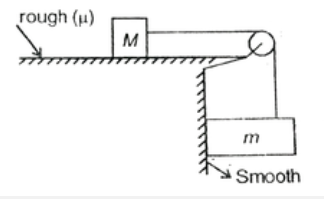
The minimum value of coefficient of friction μ such that system remains at rest , is
View SolutionThe block A in the given figure is of mass 10sqrt(3) kg The coefficient of friction between the block and the surface on which it rests is 0.5. Find maximum mass of block B possible such that the system will be in equilibrium is.
View Solution100 किग्रा द्रव्यमान का ब्लॉक A, 200 किग्रा द्रव्यमान के ब्लाक B पर रखा हुआ है तथा चित्र में दिखाए अनुसार एक दीवार से बंधा हुआ है। ब्लॉक A और B के बीच घर्षण गुणांक 0.2 तथा ब्लॉक B और जमीन के बीच घर्षण गुणांक 0.3 है। ब्लॉक B को गति देने के लिये न्यूनतम लगाया गया बल F होगा (g = 10 मी से−2)
View SolutionA block A of mass 3kg and another block B of mass 2 kg are connected by a light inextensible string as shown in figure. If the coefficient of friction between the surface of the table and A is 0.5. What maximum mass C is to be placed on A so that the system is to be in equilibrium ?
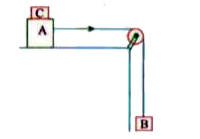
View SolutionTwo blocks A and B having masses 100 kg and 200 kg are placed as shown in the figure. The block A is connected to a wall with a light inextensible string. The coefficient of friction between the blocks is 0.3 and that between the block B and the floor is 0.03. Then the minimum force required to move the block B will be (take g=10m//s^(2) )
View SolutionA block A of mass 3kg and another block B of mass 2 kg are connected by a light inextensible string as shown in figure. If the coefficient of friction between the surface of the table and A is 0.5. What maximum mass C is to be placed on A so that the system is to be in equilibrium? (g=10m/s2)

View Solution
